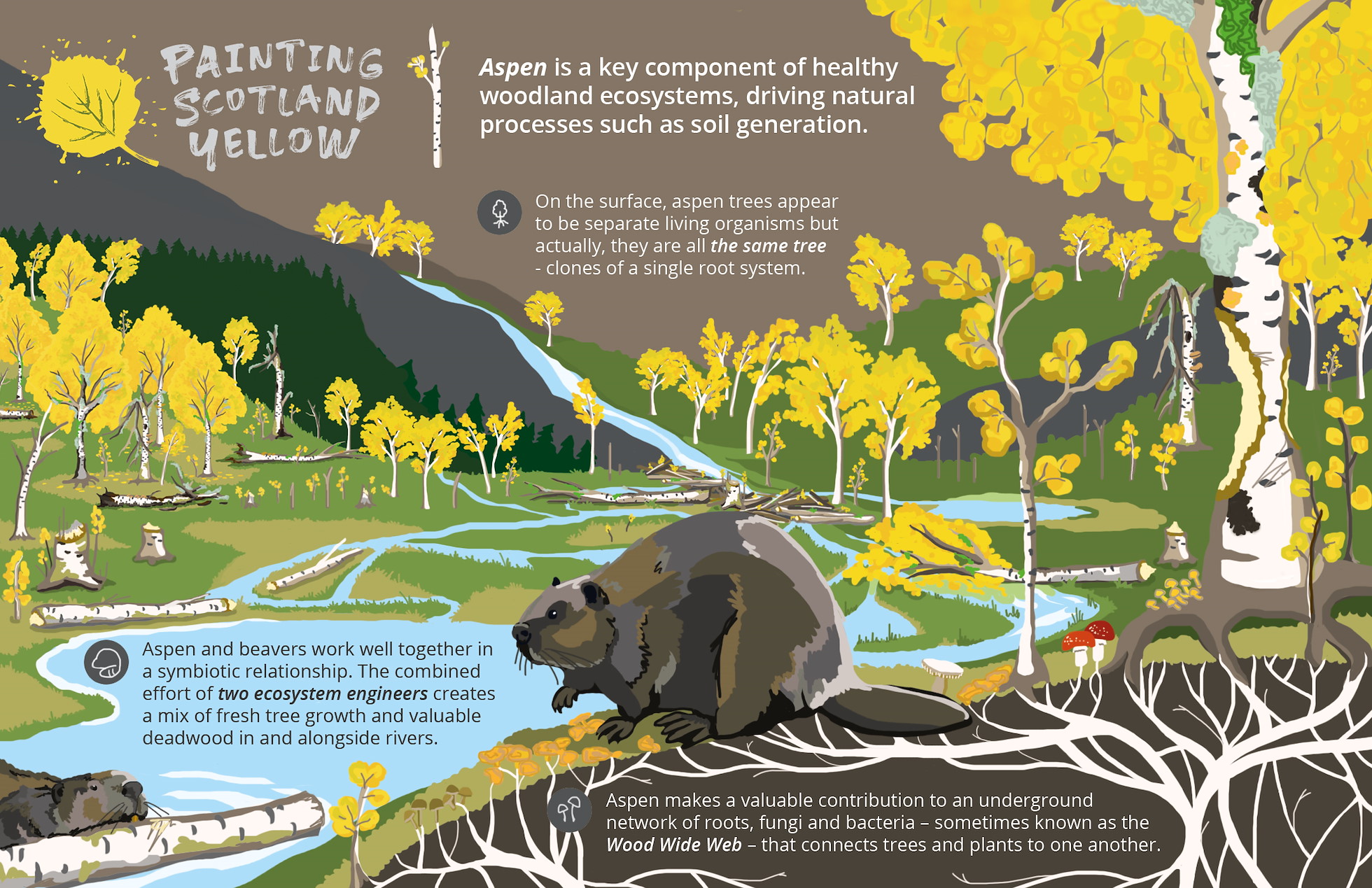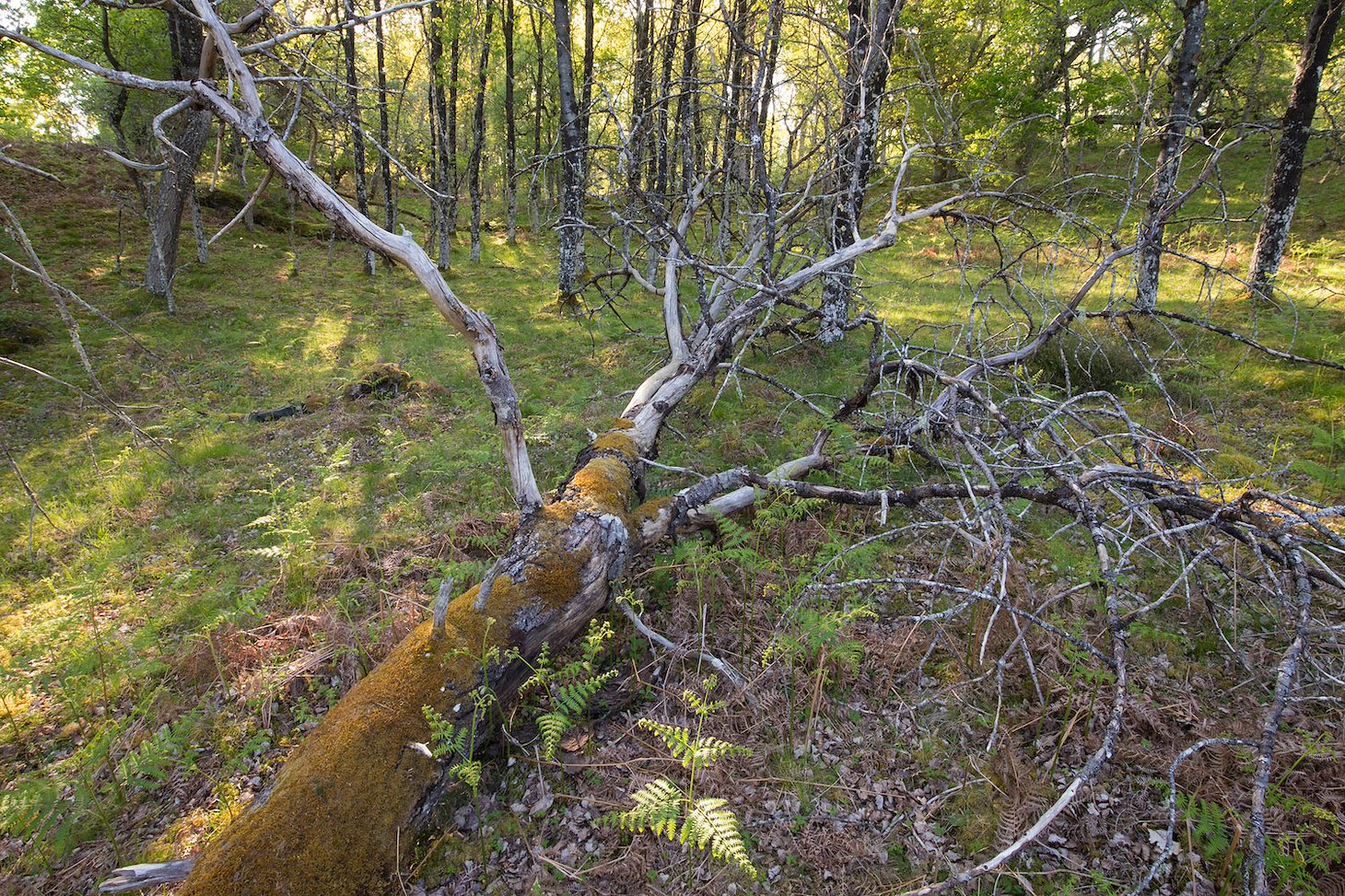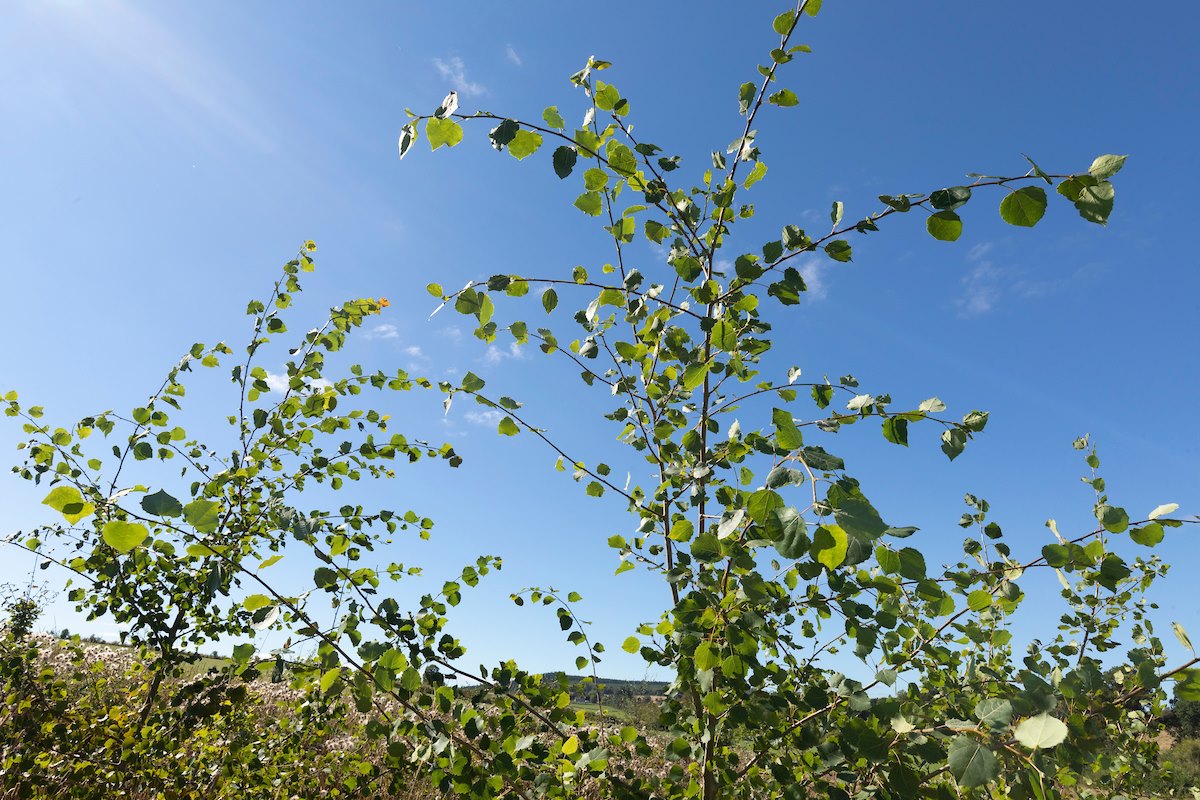ECOLOGY
Aspen is a key part of healthy woodland ecosystems, driving natural processes such as soil generation.

The world’s largest living organism is the Pando aspen grove in Utah, USA. What appears to be 47,000 individual trees is actually the same tree – clones of a single root system, which if laid out would stretch 12,500 miles!
It is in this underground network of roots, fungi and bacteria – sometimes known as the Wood Wide Web – that connects trees and plants to one another, where arguably, aspen does its best work.
Above the ground, aspen’s bark is significant. Unlike more common species like birch and Scots pine that have an acidic bark, aspen has the opposite – a basic bark. This vital substrate provides a niche for species that might otherwise struggle and therefore aspen adds both abundance and diversity to our woodlands.



Aspen is a preferred food source for beavers, now beginning to spread in range and number across Scotland. Despite concerns to the contrary, aspen responds well to beaver coppicing, which stimulates the tree to send up more growth.
Aspen fact:
Aspen and beavers work well together. The combined effort of two ecosystem engineers, each responding to the presence of the other, creates a mix of fresh tree growth and valuable deadwood alongside rivers and watercourses.
Beavers typically avoid getting too far from their ponds and canals but they have been recorded making a 238m foray to target a tasty stand of aspen!

